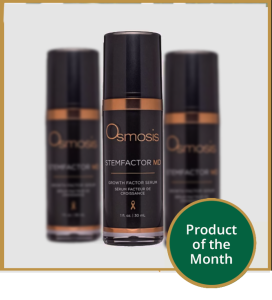May is the final month of spring, full of sunshine, flowers and celebrations, from Cinco de Mayo to Mother’s Day. It is a time when we start to feel the warmth and energy of the sun’s presence. The sun is very important to our existence, as it warms our seas, stirs our atmosphere, generates our weather patterns, and gives energy to the growing green plants that provide the food and oxygen for life on Earth. May is both National Sunshine Month and Skin Cancer Awareness Month, so for this month’s message, we would like to share with you ways you can absorb all the wonderful benefits of the sun without causing sun damage and empower you with the knowledge to detect early signs of skin cancer.

1. Protection:
“An Ounce of Prevention Is Worth A Pound of Cure.” Ben Franklin
Regular daily use of SPF 15 sunscreen can reduce your risk of developing squamous cell carcinoma (SCC) by about 40 percent, and lower your melanoma risk by 50 percent. Here are some guidelines to help you choose the perfect sunscreen for your protection.
- Choose a sunscreen that offers both UVA/UVB protection, SPF stands for “sun protection factor,” this refers only to protection against UVB radiation, It has little to do with protection from sun’s UVA rays, which penetrate deep into the skin, suppress the immune system, accelerate skin aging and may cause skin cancer. UVB rays are the primary culprits causing sunburn, and damaging the more superficial epidermal layers of the skin. UVB rays contribute to the development of skin cancer and photo aging (wrinkling). However, UVA rays make up 95 percent of the UV radiation that reaches the planet's surface. Studies have shown that UVA rays damage skin cells in the basal layer of the epidermis, where most skin cancers occur.
- Choose Physical Not Chemical -the FDA-led January 2020 study shows that CHEMICAL sunscreen ingredients are systemically absorbed after one application, and some ingredients can stay in the blood for at least 3 weeks. The sunscreen chemicals tested include avobenzone, oxybenzone, octocrylene, homosalate, octisalate and octinoxate, and all six active ingredients tested readily absorbed into the bloodstream of humans in the study — and at concentrations that surpass an important FDA safety threshold. These chemicals are linked to endocrine disruption, organ toxicity, contact allergies and photo-allergies, meaning exposure to light is required to generate an allergic response.
PHYSICAL sunscreens are sometimes called sun blocks. They use mineral-based ingredients, like titanium dioxide and zinc oxide, that work by staying on top of the skin to deflect and scatter damaging UV rays away from the skin. Zinc oxide is believed to reduce the appearance of blemishes and ease skin irritation and inflammation, reducing the number and severity of acne breakouts. According to the American Academy of Dermatology, it should also be part of your treatment plan for dark spots or melasma. When used daily, broad-spectrum sunscreen with zinc oxide that's SPF 30 or higher can help prevent further DNA damage and darkening of the skin.
- No Retinyl Palmitate-When used in a night cream, this form of vitamin A is supposed to have anti-aging effects. But on sun-exposed skin, retinyl palmitate may speed development of skin tumors and lesions, according to government studies. The FDA has yet to rule on the safety of retinyl palmitate in skin care products, but EWG recommends that consumers avoid sunscreens containing this chemical.
Vibrant Skin Recommendations:
Suntegrity Face and Body SPF 30
Sunbetter™ Advanced Mineral SPF 68-70
EltaMD UV Pure Broad-Spectrum SPF 47
We also recommend applying an antioxidant serum like Osmosis MD Replenish, IS Clinical Super serum or Skin Better Alto skin defense to your face first before sunscreen to boost your sunscreen’s effectiveness and help fight against free radical damage caused by the sun.
To find out more bout how to take care of your skin during summer, make sure to read our article about eight summer skincare tips to protect your skin from heat and humidity.
2. Awareness:
Skin cancer develops when skin cells are damaged, mutated and grow abnormally, the sun's ultraviolet (UV) radiation is the main cause of skin cancer. Each time your skin is damaged by UV rays it causes changes take place in the structure and function of the skin cells. If UV damage keeps accumulating, skin cells become less able to repair, increasing the risk of skin cancer. Everyone should have a total body skin examination annually by a physician. If you have a history of skin cancer, you should be evaluated at least twice a year by a dermatologist. It's a lifetime of follow-up evaluations with your doctor, not just because of a recurrence, but because of the possibility of other new skin cancers as well.
There are three main types of skin cancer (Carcinoma is another word for cancer): basal cell carcinoma, squamous cell carcinoma and melanoma.
Be aware of skin and mole changes on a daily basis.
Melanoma
Melanoma can grow quickly. The most aggressive forms can become life threatening in as little as six weeks and if untreated, it can spread to other parts of the body.
Use the ABCDE rule to look for signs of melanoma formation:
- A = asymmetry, look for spots that are asymmetrical not round
- B = border, look for spots with uneven borders
- C = color, look for spots with an unusual or uneven color
- D = diameter, look for spots that are larger than 7 mm
- E = evolution, look for any changes to spots on your skin, and see your doctor as soon as possible if you notice any changes.
Basal cell carcinoma (BCC)
This is the most common but least dangerous form of skin cancer. It grows slowly, usually on the head, neck and upper torso, it may appear as a lump or dry, scaly area. It can be red, pale or pearly in color. As it grows, it may ulcerate or appear like a sore that does not heal properly. The earlier BCC is detected, the easier it is to treat.
Squamous cell carcinoma (SCC)
This type of skin cancer is not as dangerous as melanoma but may spread to other parts of the body if not treated. It can be a thickened, red, scaly spot that may bleed easily, crust or ulcerate.
Any new lesion that bleeds or scabs and does not go away over four weeks should be brought to your physician's attention.
3. Benefits of the Sun:
Countless studies have uncovered the impact the sun has on our overall wellness, proving how truly beneficial even just 5-15 minutes of natural sunlight two to three days a week can affect our mental and physical health.
Improves your sleep
The brain’s pineal gland benefits directly from natural sunlight stimulation. The pineal gland produces melatonin, a hormone that modulates sleep cycles for your body circadian rhythm. Circadian rhythms are physiological and behavioral changes that follow a daily cycle and influence critical bodily functions such as hormone release, temperature, eating habits, digestion, mood, and sleep.
Mood enhancer
Sunshine boosts your body’s level of serotonin, which is a chemical that improves your mood and helps you stay calm and focused.
Lowers Blood Pressure
Researchers have noted a link between exposure to the sun and lower blood pressure levels, with reduced death rates from cardiovascular issues. They suggest that exposure to sunlight triggers the skin to release stores of nitrogen oxides, which cause arteries to dilate, lowering blood pressure.
Maintains strong bones
Our bodies produce vitamin D3 (cholecalciferol). when exposed to sunlight—about 15 minutes in the sun a day is adequate if you’re fair skinned. Vitamin D helps your body maintain calcium to prevent brittle, or thinning bones.
Strengthens your immune system
The natural production of Vitamin D boosts the immune system's antiviral, antibacterial, and anti-inflammatory potential. Vitamin D has been proven to significantly lower the risk of infections, including respiratory tract infections such as the Flu and Covid-19. Vitamin D activates the innate and the adaptive immune system. That means it helps recruit the immune cells at infection sites and plays a part in antibody creation to fight off specific pathogens. It also helps with the formation of immunological memory. This enables the immune system to respond better and quicker to future infections by the same or similar pathogens. Optimal levels of vitamin D may also reduce the risk of and improve certain autoimmune diseases.
Vitamin D deficiency co-exists in patients with COVID-19. At this time, dark skin color, increased age, the presence of pre-existing illnesses and vitamin D deficiency are features of severe COVID disease. Of these, only vitamin D deficiency is modifiable, checking Vitamin D levels is very important to ensure your immune system is supported. Through its interactions with a multitude of cells, vitamin D may have several ways to reduce the risk of acute respiratory tract infections and COVID-19: reducing the survival and replication of viruses, reducing risk of inflammatory cytokine production. https://pubmed.ncbi.nlm.nih.gov/33142828/
We hope this message gave you value and hope for a summer full of sunshine and wellness. We would like to wish all the mothers a very Happy Mother’s Day! With gratitude, The Vibe Tribe




